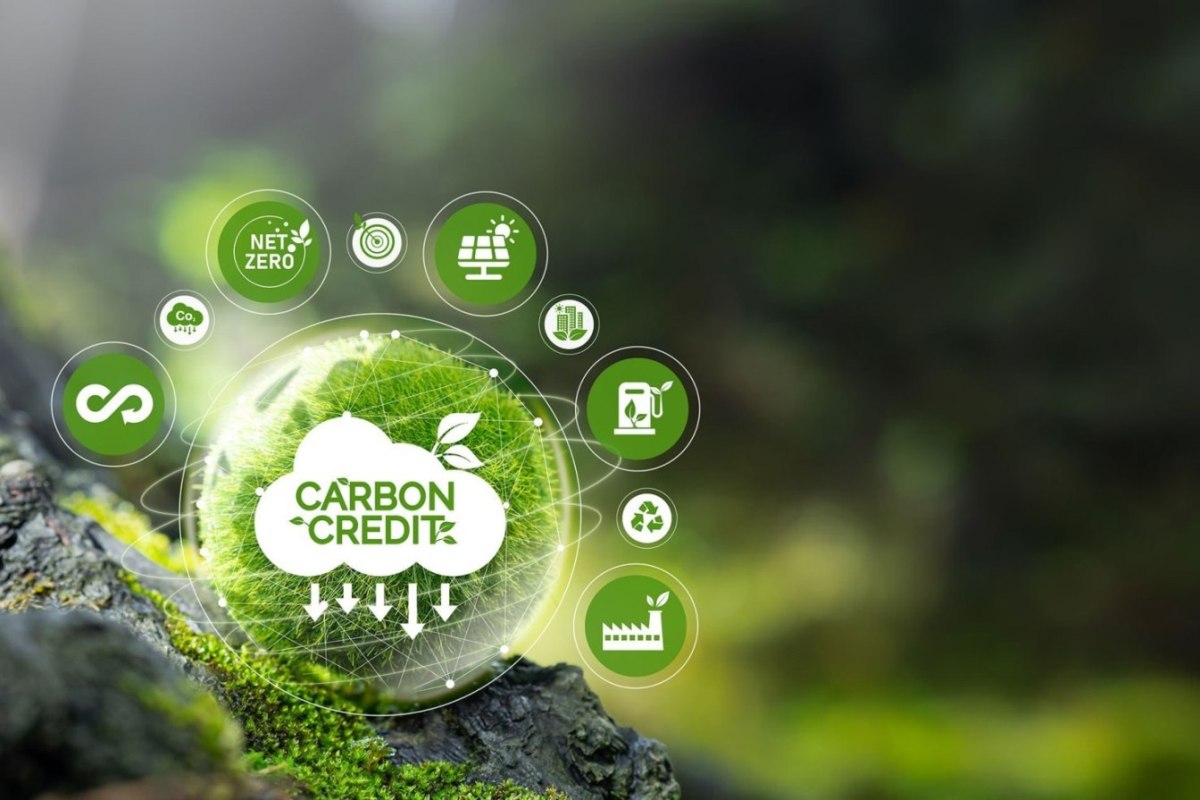India’s manufacturing story is getting a green reboot. No longer content with being the world’s low-cost workshop, a new breed of industrial leaders is proving that efficiency, innovation, and sustainability can go hand in hand. From carbon-smart factories to AI-driven energy optimisation, they’re rewriting the rules of production.
In this insightful piece, Mr. Bhargav Joshi, General Manager at Advait Energy Transitions Limited – a BSE-listed Ahmedabad-headquartered innovator in power transmission, telecom infrastructure, and clean energy solutions such as green hydrogen and carbon markets – takes us inside this manufacturing makeover. He explores what sets the frontrunners apart, and why the future of Indian industry will be powered as much by responsibility as by resilience. Here’s a closer look at the strategies, technologies, and mindsets driving this transformation.
Inside India’s Manufacturing Makeover: What Sets the Leaders Apart
India’s manufacturing sector is undergoing a profound transformation. Once known primarily for low-cost production, it is now redefining itself with a focus on high-value innovation, digital intelligence, and environmentally responsible practices. A growing push toward green energy and sustainable manufacturing is reshaping how the sector operates, designs its products, and engages with global supply chains.
This transition is not uniform. While policy reforms and industrial incentives are helping the sector at large, a distinct group of manufacturing leaders is emerging. These are companies that are not only adapting to the shift but actively driving it. These front-runners stand out for their ability to integrate digital tools, sustainable practices, and workforce development into their long-term strategies.
From Traditional Plants to Sustainable Smart Factories
Historically, Indian manufacturing has been driven by conventional sectors like textiles, metals, and machinery. These sectors often relied on carbon-heavy energy inputs and manual systems. However, this model is changing. In today’s context, sustainability is not just an added benefit. It has become a critical business requirement.
Leading companies are investing in smart factory systems that incorporate energy-efficient technologies, solar power, and automated production. These changes are not merely cosmetic. Smart factories equipped with real-time monitoring and advanced controls help reduce both energy usage and emissions. Several Indian facilities are now integrating green building practices, using natural lighting, water recycling systems, and rooftop solar to reduce their environmental footprint.
This shift is helping firms balance cost control with climate-conscious operations. This priority now matters to both domestic stakeholders and international clients who are seeking greener supply chains.
Digital Transformation with an Eye on Carbon Efficiency
One of the defining features of leading manufacturers is their ability to combine digitalization with sustainability. Real-time data systems are being used not only to streamline production but also to monitor carbon output, optimize resource consumption, and minimize wastage.
Advanced analytics, IoT-enabled equipment, and AI-based process management allow manufacturers to track the exact amount of energy used per unit of output. This level of insight supports the adoption of green energy solutions, such as scheduling energy-intensive processes during hours of maximum solar output or automatically adjusting systems to reduce idle consumption.
These digital efficiencies contribute to both profitability and decarbonization goals. As a result, Indian manufacturers can position themselves as future-ready players in a climate-sensitive global economy.
Investing in Green Talent and Skill Development
Sustainable manufacturing requires more than just new equipment. It also demands a skilled workforce capable of understanding and implementing green technologies. Industry leaders are making proactive investments in workforce training focused on areas such as renewable energy systems, energy management, and sustainable materials.
In-house academies and partnerships with technical institutes are equipping workers to operate energy-efficient machinery, conduct lifecycle assessments, and work with low-emission technologies. These companies are building internal cultures that view environmental responsibility as a shared goal rather than a compliance issue.
Talent development is now closely linked with sustainability. Companies increasingly seek engineers and technicians who are familiar with clean energy systems and circular manufacturing models.
Sustainability at the Core of Business Strategy
A key differentiator of leading manufacturers is their approach to sustainability. Rather than treating environmental practices as optional or reactive, they are placing sustainability at the heart of their business models.
These companies are moving toward net-zero emissions targets, setting up renewable energy plants on-site, and working toward zero-waste operations. Several firms are participating in global sustainability frameworks such as RE100, committing to source 100 percent of their energy from renewables in the coming decades.
Materials innovation is another area of progress. Leaders are substituting plastic and chemical-heavy components with eco-friendly alternatives such as bioplastics, recycled inputs, or sustainably sourced materials. In sectors like packaging, automotive, and electronics, green product design is fast becoming a core offering.
Green Supply Chains and Local Sourcing
Supply chain resilience has become a major strategic concern since the pandemic. However, for leading manufacturers, resilience is now coupled with environmental sustainability. Companies are actively working to reduce the carbon footprint of their supply networks through local sourcing, electrified logistics, and supplier engagement on ESG metrics.
Some manufacturers are moving beyond traditional procurement models to establish green vendor programs, where suppliers are evaluated not just on cost or delivery time, but also on energy usage, emissions, and waste practices.
This holistic approach to sustainability ensures that companies are not just compliant internally. They also contribute to the broader greening of India’s industrial ecosystem.
Innovation with a Sustainability Focus
Innovation is no longer limited to functionality or cost-effectiveness. The top manufacturers in India are rethinking their products and processes through a sustainability lens. This includes everything from lightweighting in automotive components to energy-saving consumer appliances and biodegradable packaging materials.
In some cases, companies are setting up dedicated R&D labs for green product development. These labs focus on circular business models, reducing material intensity, and improving product end-of-life recyclability.
Intellectual property creation is also shifting. More patents are being filed for renewable energy solutions, energy storage systems, and sustainable process design. These efforts signal the growth of India’s green innovation capabilities.
Meeting Global Standards and Green Certifications
To remain competitive in international markets, Indian manufacturers must comply with evolving global regulations and environmental benchmarks. Leading firms are not only meeting these standards but also actively seeking green certifications such as ISO 14001, LEED, and energy star ratings.
Compliance is no longer a checkbox activity. It is part of a broader commitment to transparency, stakeholder accountability, and ethical manufacturing. Export-oriented firms are also aligning with European and North American climate disclosure frameworks to ensure full traceability of emissions and energy inputs.
These practices enable companies to attract investment, secure long-term buyer contracts, and build trust in climate-conscious markets.
Public-Private Collaboration on Green Manufacturing
Manufacturing leaders are also leveraging government schemes aimed at sustainability. Programs under the National Green Hydrogen Mission, the PLI for High-Efficiency Solar PV Modules, and state-level industrial solar incentives are helping companies fund the transition to cleaner operations.
In addition, green industrial clusters and eco-industrial parks are being developed to provide shared infrastructure for renewable energy, effluent treatment, and sustainable logistics. Industry associations and think tanks are playing a role in standardizing best practices and building sector-specific roadmaps for net-zero growth.
This ecosystem-level support is turning isolated green practices into scalable and replicable models of industrial transformation.
Conclusion: Manufacturing for a Greener Future
India’s manufacturing future will not be defined by volume alone. It will be shaped by how well the sector can meet the dual challenge of economic growth and environmental responsibility. As international trade shifts toward greener supply chains, Indian manufacturers that prioritize clean energy, circular processes, and digital integration will be best positioned to lead. The standout performers are those who view sustainability not as a constraint but as a competitive advantage. Their commitment to green innovation, skill development, and energy transition is what truly sets them apart. In doing so, they are not only powering India’s economic ambitions but also contributing to its environmental goals. The country’s manufacturing makeover is not just industrial. It is ecological. The leaders in this transition are building factories of the future, powered by responsibility, resilience, and renewable energy.


















.jpg)




